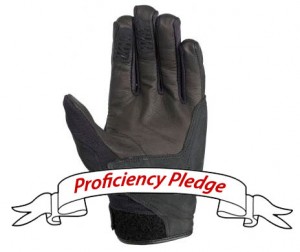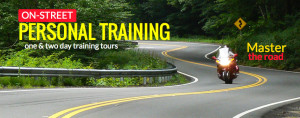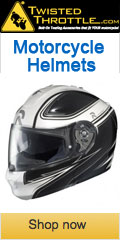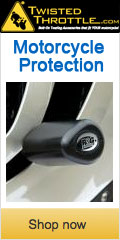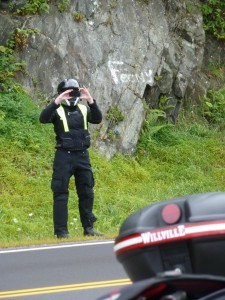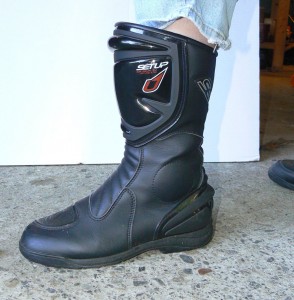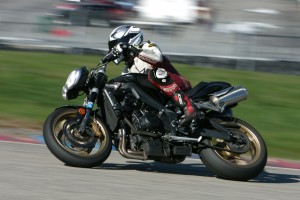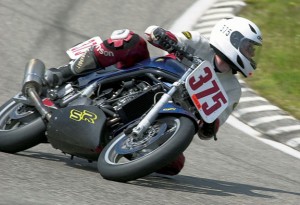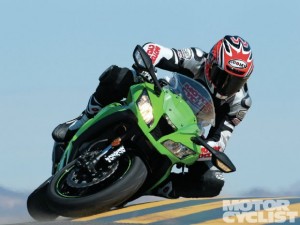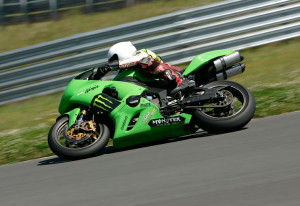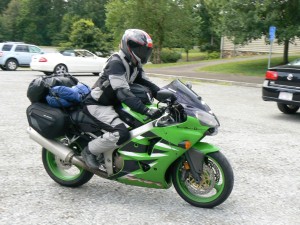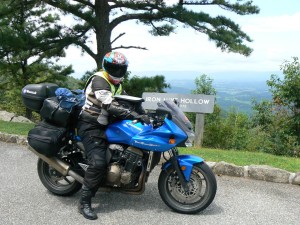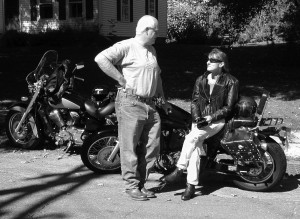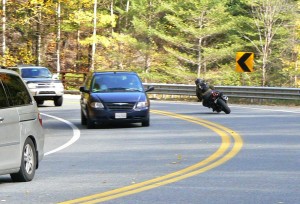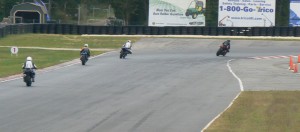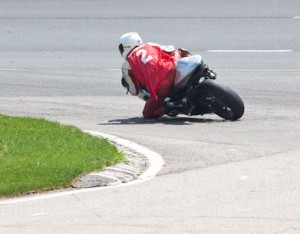 I know not every reader of the Zone Blog follows motorcycle roadracing, so you may not have heard about the recent death of 21 year old young gun Tommy Aquino who was involved in a collision with a fellow rider while training at a motocross track in California. Even though Tommy’s death occurred on a motocross track, it is one more example of the sad realities of riding a motorcycle, whether on the dirt or the street.
I know not every reader of the Zone Blog follows motorcycle roadracing, so you may not have heard about the recent death of 21 year old young gun Tommy Aquino who was involved in a collision with a fellow rider while training at a motocross track in California. Even though Tommy’s death occurred on a motocross track, it is one more example of the sad realities of riding a motorcycle, whether on the dirt or the street.
It Happens
I don’t know the details of Tommy’s crash, but knowing that he was a very skilled rider begs the question, “If it can happen to him, what chance do I have?” Of course, most of you aren’t training to become a future world champion, but that doesn’t mean that you are immune to a similar fate.
The fact is that the public roads present as many or more dangers as a motocross track. Safety guru Larry Grodsky died while riding home from a safety conference. My friend and coworker, Chappy lost his life commuting home after work. My wife’s cousin died on a Sunday ride with a friend. The list of street riders who have died goes on and on.
I often say that most crashes are avoidable, and I stand by that statement, but the reality is that even the best riders can find themselves at the pointy end of a bad crash. Larry Grodsky is an excellent example, but there are many others.
Fred Rau, a colleague at Motorcycle Consumer News wrote a poignant column in the latest issue about a fellow rider who met his end on a group ride. The article illustrates the cold truth that sometimes shit happens even to the best riders. Being in the wrong place at the wrong time is the only reason his friend is dead now.
Hopefully, you all understand the realities of motorcycle safety and act accordingly. Not that you should ride scared or never push the envelope from time to time, but one key to survival is to know the real risks of riding and how to manage those risks. Unfortunately, many riders don’t take risk management seriously enough.
Don’t Give Up, Get Smart
I’ve been riding motorcycles for almost 40 years and have survived this long partly because of luck, but mostly because I am very conscientious of where and how I ride. I don’t take my safety for granted.
I’m not saying that those who have met their demise were not conscientious. What I am saying is that life is unpredictable. But, we can minimize the risks.
Read this post to learn how.
And this one.
Risk versus Reward
I often tell people who are on the fence about whether they should ride a motorcycle to carefully measure the risk versus reward ratio. If there is not a big payback in terms of enjoyment, then I suggest they find something else to do. The reward must match or exceed the risk.
This is what I told my daughter Jeannine when she first started riding on the street back in 2006. I wanted her to know that the decision she was making to become a street rider had serious consequences. Of course, intellectually, she knew this, but it is important that we remind ourselves frequently about the risks of straddling a two-wheeled machine and then riding it at speed.
Is your risk to reward ratio acceptable to you?
Fight Complacency
If you haven’t evaluated your mental and physical skill sets lately, I suggest you do so. Why? Because it’s too easy to become complacent about the importance of excellent survival strategies and riding skills. As we ride more and more miles without incident, we gradually assume that we have this riding thing figured out and that the bad things won’t happen to us. Wrong!
We can’t control everything, but we can hedge our bets by increasing our knowledge and skill and making sure our behavior is in line with minimizing the risks of riding a motorcycle. Take this post as a reminder to do all you can to be the best rider you can be.
 Proficiency Pledge
Proficiency Pledge
Earlier this past year, I included a pledge in one of my MCN columns to encourage readers to think about their responsibility to be the best they can be. Take this pledge for yourself AND for the ones who love you. Feel free to add your own points.
Pledge:
- I will expand my knowledge of motorcycling safety and control through continual reading, and by taking one formal safety/skills course per season.
- I will practice my physical skills on my own to keep them sharp.
- I will wear protective gear on every ride.
- I will develop mental strategies for managing traffic and other hazardous situations.
- I will never ride while intoxicated or impaired in any way.
- I will choose not to ride if my ability to manage hazards is compromised.
- I will choose not to ride with others who do not share my commitment to safety.
Signed:___________________________
Feel free to copy this pledge and print it out.*
Then hang it on your garage wall and give a copy to each of the people who care about you.
*Anyone wanting to distribute this pledge to more than their immediate friends and family should contact me for permission.
Subscribe to the mailing list!
Please Donate to Keep the Articles Coming
If you liked this article and the many other articles on this site, please toss a buck or five into the hat. It’s greatly appreciated!
- Click the PayPal “Pay Now” button.
- Then indicate quantity in $2.00 increments. – Example: put “2” in “QUANTITY” field to donate $4.00, “3” for a $6.00 donation, etc.
Why $2.00? Due to the PayPal fee structure, a $2.00 donation is significantly more beneficial compared to a $1.00 donation.
Thank You!
How Can I help You? Online Coaching NOW AVAILABLE
Stay Informed: Subscribe NOW!
 Be a Better Rider: Sign Up for Personal Training with Ken
Be a Better Rider: Sign Up for Personal Training with Ken
Support Riding in the Zone: Buy a book
Support Riding in the Zone: Buy products from Twisted Throttle & Amazon
